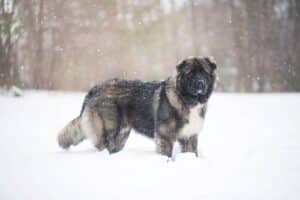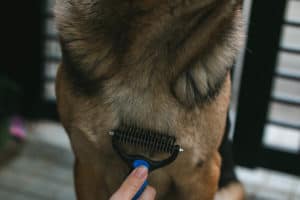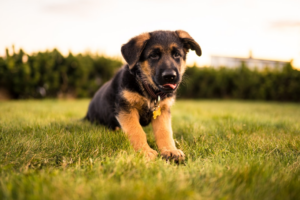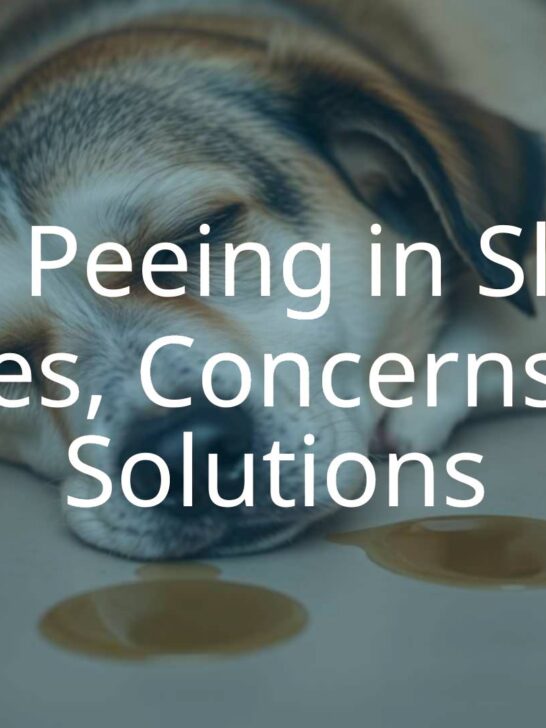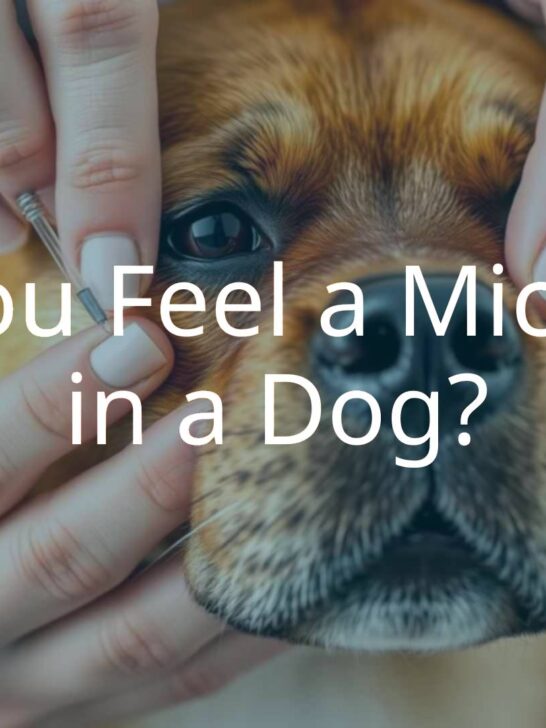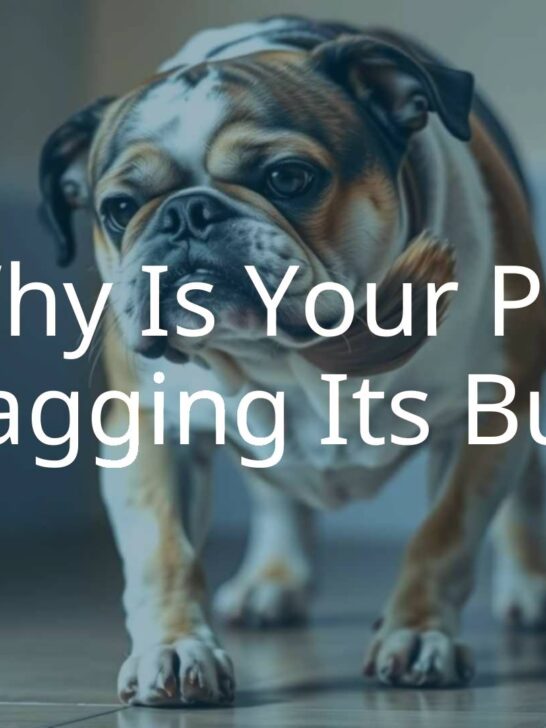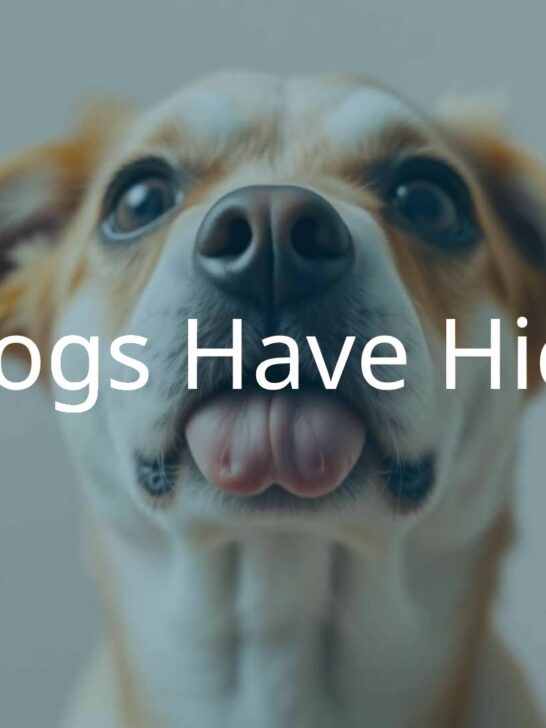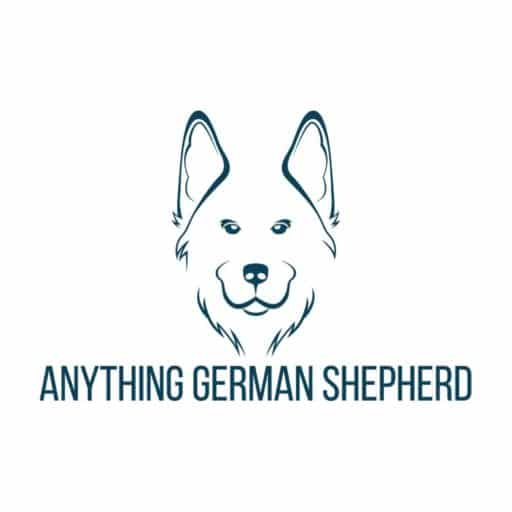Cloudy Eyes in Dogs: Causes, Symptoms, and Treatment
Cloudy eyes in dogs, seen as a hazy film or a change in color over what is usually a clear cornea or lens, can worry any dog owner. While sometimes it simply comes with aging, a cloudy eye might also mean another health problem is present-some are harmless while others need fast treatment. Knowing what can cause cloudy eyes, how vision can be affected, and what other signs to watch for is key to getting your dog the care they need. This guide covers everything about cloudy eyes in dogs: their look, effects, diagnosis, treatment, and steps to help prevent them.

What Are Cloudy Eyes in Dogs?
Cloudy eyes in dogs happen when you notice a hazy layer, film, or odd coloring over the eye. This can appear white, blue, gray, or sometimes reddish. The entire eye, just a spot, or only the lens may be affected. Normally, a dog’s cornea (the clear part at the front) should be see-through and let light pass easily to the retina. When light can’t pass through clearly, the eye looks cloudy, and you might notice changes in your dog’s eyes or how they act.
What do cloudy eyes look like in dogs?
Cloudy eyes can look like a white or bluish haze on the outside of the eye, or deeper inside. How it looks depends on the cause. Nuclear sclerosis, which comes with old age, usually shows as a blue tint. Cataracts look more like a white, thick cloud inside the lens. The cloudiness may cover the whole eye, only a part, or just the lens. It might appear quickly or develop slowly over a few weeks or months, which helps the vet figure out the cause.
How does cloudiness affect a dog’s vision?
Cloudy eyes can sometimes affect vision, depending on why they’re cloudy and how bad it gets. Nuclear sclerosis, for example, causes a blue haze but usually doesn’t cause much vision loss, maybe some trouble focusing. Cataracts, however, block light from the retina and can lead to blindness if untreated. Other problems like corneal ulcers or corneal degeneration might also make your dog lose some or all of their sight. Signs your dog is struggling to see include bumping into things, being scared to go outside, or acting confused. Pain from eye problems might make your dog anxious or change their behavior.
What Causes Cloudy Eyes in Dogs?
Many things can make a dog’s eyes cloudy, from simple aging to more serious illnesses. The cloudiness usually means something is wrong in one or more parts of the eye-the lens, cornea, or inside the eye. Knowing these causes helps you get your dog the right treatment quickly.
Lens problems
The lens sits behind the pupil and helps focus light. Problems here are a common reason for eyes to look cloudy.
Nuclear sclerosis
Nuclear sclerosis (or lenticular sclerosis) is a normal aging change. As a dog ages, the lens becomes denser and looks bluish. It can seem like a cataract but usually does not cause pain or major vision issues. It affects both eyes at the same time. No treatment is needed just for nuclear sclerosis, but these dogs can still develop cataracts, so regular checkups are a good idea.
Cataracts
Cataracts are a more serious lens problem and do affect vision. The lens gets milky white and blocks light from reaching the retina, which can cause blindness over time. Cataracts are often due to aging, injury, diabetes, or are inherited; some breeds are more likely to get them. Early surgery can remove cataracts and give back vision, but untreated cataracts can also cause other problems like glaucoma or uveitis.
Corneal problems
The cornea is the clear layer at the front of the eye, and it can also become cloudy for several reasons.
Corneal ulcers and injuries
Corneal ulcers are painful sores caused by injuries, scratches, or burns. Infections may also play a role. Ulcers usually make only a patch of the cornea cloudy, not the whole eye. You’ll likely see your dog squinting, blinking more, or pawing at their eye. These need quick vet care to prevent infections, more damage, and possibly losing sight. Old injuries can leave a scar causing lasting cloudiness, though no treatment is usually needed once healed.
Corneal dystrophy
Corneal dystrophy is inherited and happens when fat or cholesterol builds up in the cornea. Both eyes are usually affected, in dogs of any age. Most of the time, it doesn’t cause much vision loss, but some types can lead to ulcers or swelling. There are three types-epithelial (outer layer), stromal (middle), and endothelial (deep). Vets only treat it if ulcers develop, often with antibiotics if there’s an infection.
Internal eye conditions
Problems behind the cornea or lens can also make a dog’s eye cloudy, sometimes with pain and vision loss.
Glaucoma
Glaucoma happens when pressure builds up inside the eye. This can damage the nerves and other parts of the eye, causing cloudiness, redness, and possibly blindness. It can be inherited or come after another eye problem. It may appear suddenly, with symptoms like swelling, redness, vision loss, and severe pain. Glaucoma is an emergency-treatment aims to lower the pressure, and surgery may be needed if medication doesn’t help.
Anterior uveitis
This is when the front part of the eye gets inflamed. It can be very painful and cause cloudiness, redness, discharge, squinting, sensitivity to light, or changes in the iris or pupil. Uveitis can be triggered by infections, immune diseases, cancer, or injury. Treatment usually includes anti-inflammatory drops, and antibiotics if an infection is found. Acting quickly is necessary to protect vision.
Other causes
Dry Eye (Keratoconjunctivitis sicca, KCS)
Dry eye happens when a dog’s eyes don’t make enough tears. This leads to redness, pain, thick discharge, and may cause ulcers and scars over time. Diagnosed with a Schirmer tear test, it’s usually managed with tear-boosting drops or ointments, and sometimes surgery for tough cases.
Eye infections
Bacterial, viral, or fungal infections of the eye bring inflammation, which can make eyes look cloudy. There’s often redness, swelling, and discharge. Treating the infection usually clears up the cloudiness, but if left alone can lead to permanent damage.
Eye trauma
Blows, scratches, or foreign objects can harm the eye and make it cloudy. These injuries are painful and urgent. Fast vet treatment is needed to avoid infection, protect sight, and stop the pain.
Age-related changes
Some conditions, like corneal endothelial dystrophy (CED), are related to aging and lead to fluid buildup, making the eye look foggy or bluish. Another is thinning of the iris, which can change the look of the pupil. While some age-related change is harmless, others may require treatment.
Other Symptoms You Might Notice
Cloudy eyes are often not the only sign. Other problems can help the vet figure out what’s wrong faster.
Other signs to look for
- Pain or Discomfort: Your dog might rub their eye, blink a lot, keep it shut, or seem withdrawn.
- Redness: The white part of the eye may be red, a sign of inflammation.
- Discharge: Look for anything from watery to thick yellow or green fluid.
- Swelling: The eye or areas around it might look swollen.
- Appearance Changes: Bulging eye, pupil size change, or misshaped pupil/iris.
- Sensitivity to Light: Your dog might avoid bright areas if their eyes hurt.
- Vision Changes: Signs like bumping into things, being unsure of paths, or unwillingness to move, especially if both eyes are affected.
- Behavior Changes: Dogs in pain or with vision loss may become clingy, grumpy, or eat and move less.
Symptom differences for each main cause
- Nuclear Sclerosis: Only a bluish haze; no pain or vision loss.
- Cataracts: Vision fade is main sign. If it leads to other problems, pain and redness can appear.
- Corneal Ulcers: Severe pain, lots of blinking or tearing, possible greenish discharge.
- Glaucoma: Pronounced pain, eye bulging, redness, big pupils, quick loss of sight.
- Anterior Uveitis: Redness, squinting, discharge, and sometimes odd pupil or iris shape.
- Dry Eye (KCS): Thick yellow discharge, persistent redness, sore and dull-looking eye.
- Eye Infections: Symptoms vary, but usually include redness, discharge, pain, and swelling.
If you notice any of these symptoms, especially with eye changes, do not wait-visit your veterinarian as soon as possible.
How Vets Check for Cloudy Eyes in Dogs?
Finding the cause of cloudy eyes usually starts with a talk about your dog’s health and a close look at both their eyes and overall wellbeing. Some simple tests may also be used.
First steps at the vet
The vet will ask when you first saw the cloudiness, if it affects one or both eyes, and if you noticed any other changes such as pain, behavior shifts, or vision difficulty. A physical exam checks for general health issues that can relate to eye problems. The vet inspects the eyes for redness, swelling, changes of shape, or size, often using an ophthalmoscope to see inside the eye. They may check vision by moving their hand towards the eye or using objects to see if your dog can follow them.
Common veterinarian tests
| Test | What It Checks |
|---|---|
| Schirmer Tear Test | Measures tear production-important for diagnosing dry eye (KCS). |
| Fluorescein Stain | A dye is put on the eye to show scratches or ulcers on the cornea under blue light. |
| Tonometry | Checks pressure inside the eye-a must for finding glaucoma or uveitis. |
| Bloodwork | Screens for illnesses like diabetes that may affect the eye. |
| Cytology & Cultures | Samples from eye discharge, checked under a microscope or grown in lab to identify infection type. |
| Imaging (Ultrasound/MRI) | Looks for deeper problems in the eye not visible during regular exam. |
These tests help the vet decide what’s causing the problem and the best way to treat it. If needed, they may send you to a specialist.
How Are Cloudy Eyes in Dogs Treated?
What works best depends on what’s causing the cloudy eyes. Once the vet knows the cause, the treatment will match the specific condition, aiming to ease pain, save sight, and keep the eyes healthy. Treatments can be as simple as drops, or may involve surgery.
Non-surgical options
- Eye Drops & Ointments:
- Antibiotics: Used for bacterial infections, like conjunctivitis or ulcers.
- Anti-inflammatories: Help with swelling in conditions like uveitis or severe dry eye.
- Glaucoma Drops: Lower eye pressure in glaucoma cases.
- Lubricating Drops: Used for dry eye to help keep the eye moist.
- Healing Agents: Special gels help ulcers heal faster.
- Corneal Edema Solutions: Hypertonic saline can be used for certain corneal conditions.
- Medications by Mouth: Sometimes pills are needed alongside drops, such as antibiotics or anti-inflammatories.
- E-Collars: Rigid cones to prevent the dog from making the problem worse by rubbing the eye.
- No Treatment Needed: Nuclear sclerosis doesn’t need treatment, nor do most corneal scars after healing. Corneal dystrophy also usually doesn’t need treatment unless painful ulcers form.
Surgical options
- Cataract Removal: Damaged lens taken out, sometimes replaced with an artificial lens.
- Glaucoma Surgery: If drops can’t control pressure, surgery might help; if the eye is blind and painful, it may need to be removed.
- Corneal Surgery: For deep or stubborn corneal ulcers, surgery may be needed to help healing.
- Corneal Edema Surgery: In certain cases, surgery can help stop this from getting worse.
- Dry Eye Surgery: Rarely, surgery helps with tear production in severe dry eye cases.
Your vet will explain what to expect from surgery, what is likely to happen, and may refer you to an animal eye specialist.
What to expect-prognosis
- Very Good Outcome: Nuclear sclerosis is harmless and doesn’t limit vision.
- Good Outcome if Treated: Many ulcers, dry eye cases, and cataracts (with surgery) do well when managed properly.
- Uncertain Outcome: Uveitis and corneal dystrophy can go either way-catching and treating them quickly improves the chances.
- Poor Outcome: Glaucoma and corneal endothelial degeneration often lead to blindness if not treated quickly.
Using medicine exactly as prescribed and following all your vet’s advice really helps your dog recover or avoid problems.
Is a Vet Visit Needed for Cloudy Eyes?
The simple answer is yes. Some cloudy eyes are harmless, but others are serious and need a vet as soon as possible. It isn’t possible for a dog owner to tell the difference at home, so always have a vet take a look if you spot any changes in your dog’s eyes.
When it’s urgent
- Sudden cloudiness, especially in one eye
- Severe pain-squinting a lot, holding the eye closed, pawing at the eye, or yelping
- Swelling or bulging of the eye
- Bleeding around or in the eye
- Extreme redness
- Sudden trouble seeing-bumping into things, acting lost
- Thick, colored, or bloody fluid from the eye
- Known recent injury or fight
- Eye problems along with fever, vomiting, not eating, or acting very sick
What can happen if you wait?
- Vision Loss: Delaying help can end in blindness for conditions like untreated glaucoma or deep ulcers.
- Pain: Eye problems can really hurt. Waiting means your dog suffers longer and can develop other health issues.
- Loss of the Eye: In some serious cases, delaying can mean the eye needs to be removed to stop the pain and protect your dog’s health.
- Missed Health Issues: Cloudy eyes might mean another health issue like diabetes. Waiting can make these problems worse.
Because of these risks, don’t wait-call your vet if you notice your dog’s eyes are cloudy or see other strange eye symptoms.
Can You Prevent Cloudy Eyes in Dogs?
Not every cause can be stopped, especially when it comes to things like aging or genetics. But you can still do a lot to keep your dog’s eyes as healthy as possible by following some simple steps and paying attention to their eyes.
Prevention tips
- Vet Visits: See your vet regularly-eye exams are part of regular checkups, which can catch problems early.
- Protect Their Eyes: Don’t let your dog hang their head out of car windows. Watch for sharp things at home or outside.
- Control Illnesses: If your dog has diabetes or other health problems, work with your vet to manage them closely.
- Breeding Practices: Good breeders test for hereditary eye conditions to prevent passing on bad genes.
- Quickly Treat Eye Problems: If you spot redness, discharge, or squinting, get help early before it gets worse.
- Keep the Area Clean: Wipe away any discharge with a soft, damp cloth as needed to avoid infection.
How to check at home
- Are the eyes bright or hazy/cloudy?
- Is the white part clear, or is there redness or yellow color?
- Any extra discharge or buildup by the eyes?
- Are the pupils equal and do they react to light?
- Is your dog opening their eyes normally or squinting?
- Do they seem to see well in their usual area?
You can’t stop some signs of aging like nuclear sclerosis, but being watchful and seeing your vet when anything seems off can really help your dog keep their sight and stay comfortable.
Common Questions About Cloudy Eyes in Dogs
Can cloudy eyes go away?
It depends. Some cloudiness, like “blue eye” from a virus vaccine, may clear up on its own. Surgical removal of cataracts can also fix the problem. But most age-related or damage-related causes, like nuclear sclerosis or scars, are permanent. Your vet can tell you if treatment will help in your dog’s case.
Do puppies get cloudy eyes for the same reasons as older dogs?
No, puppies usually don’t get the age-related causes. When puppies get cloudy eyes, it’s often from infection, scratches, irritation, or sometimes hereditary cataracts. They might also have early versions of problems seen in adults, but the vet will need to check which one is to blame as treatment for each is different.
Can allergies make a dog’s eyes cloudy?
Yes, but mostly in a roundabout way. Allergies cause itchiness and redness; if a dog scratches at their eyes a lot, they can cause injuries that result in cloudiness. Keeping eyes clean and reducing exposure to allergens can help lower the risk.
Are there any safe home remedies for cloudy eyes?
No, you shouldn’t try to treat cloudy eyes at home. Many causes need quick vet care or could get worse very quickly. Delaying real treatment can lead to blindness or pain. Only clean around the eye gently if your vet has told you it’s safe. Always get a professional check for any cloudy eye.


